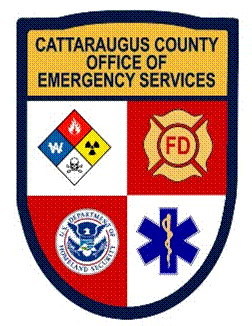
With the severe storms rolling through today (07/10/2024), it's a great time to refresh everyone on severe weather preparedness, information, and safety tips. See each category below for details.
Thunderstorm Info/ Safety Tips:
Severe Thunderstorm Watch: Issued when severe thunderstorms are possible in and close to the watch area. The Watch is issued to alert you to the possibility that storms with damaging winds, lightning, and large hail may develop.
Severe Thunderstorm Warning: Issued when a severe thunderstorm has been spotted and will move through your area soon. Postpone outdoor activities if storms are imminent.
> If you can hear thunder, you are close enough to the storm to be struck by lightning. Go to safe shelter immediately.
> Move to a sturdy building. Do not take shelter in small sheds, under isolated trees, or in convertible automobiles.
> If lightning occurs and sturdy shelter is not available, get inside a hard top automobile and keep windows up.
> Get out of boats and away from water.
> Landline telephones and metal pipes can conduct electricity. Unplug appliances not necessary for obtaining weather information. Avoid using a corded landline telephone or any electrical appliances. Use landline phones only in an emergency. Cell phones are safe!
> Do not take a bath or shower.
> Turn off air conditioners — power surges from lightning can overload compressors.
> Get to higher ground if flash flooding or flooding is possible.
> Do not attempt to drive to safety — most flash flooding deaths occur in automobiles.
> If outdoors, find a low spot away from trees, fences, and poles.
> If you are in the woods, take shelter under short trees.
> If you feel your skin tingle or your hair stands on end, squat low to the ground on the balls of your feet; place your hands on your knees with your head between them; make yourself the smallest target possible; and minimize your contact with the ground.
Power Outage Preparedness:
With the storms rolling through today, power outages are possible. Please take action immediately to prepare yourselves. Some of these tips can be followed now, some can be used to prepare for future power outages.
> If you use medication that requires refrigeration, most can be kept in a closed refrigerator for several hours without a problem - check with your physician or pharmacist.
> If you have space in your refrigerator or freezer, consider filling plastic containers with water, leaving an inch of space inside each one –this will help keep food cold if the power goes out.
> Plan to have an alternative cooking source, such as a camp stove or outdoor grill. Follow appropriate safety rules for its use outside the residence.
> Consider buying a generator and follow the rules for using it outside the residence. Before installing a generator, be sure to properly disconnect from your utility electrical service. If possible, have your generator installed by a qualified electrician.
> Have extra blankets, coats, hats, and gloves on hand to keep warm. (In cold weather times of the year.)
> If you have a computer, back up files and operating systems regularly. Turn off all computers, monitors, and other devices when they are not being used.
> If you have an electric garage door opener, locate the manual release level, and learn how to operate.
> If you have a telephone instrument or system that requires electricity to work, plan for alternate communication such as a standard telephone handset, cellular telephone, or radio.
> Have a standby generator or an alternative source of power available.
Power Outage Safety Tips:
> Turn off major appliances to prevent damage from a possible surge when the power comes back on–keep one light turned on so you know when power returns.
> Call your utility provider to notify them of the outage.
If you go outside, avoid all downed power lines and report them to your utility provider for repair. Assume all downed power lines have live electricity.
> Check to see if your neighbors have power.
> Use only flashlights for emergency lighting–candles pose the risk of fire.
> Keep your refrigerator and freezer doors shut to keep food from spoiling. When in doubt, throw it out!
> Do not use a charcoal grill or generator indoors and do not use a gas stove for heat–they could give off harmful levels of carbon monoxide.
> In cold weather, stay warm by dressing in layers and minimizing time spent outdoors. Be aware of cold stress symptoms (i.e., hypothermia) and seek proper medical attention if symptoms appear.
> In hot weather, take steps to remain cool. Move to the lowest level of the house. Wear lightweight, light-colored clothing. Drink plenty of water.
> If you are in a tall building, take the stairs and move to the lowest level of the building.
> If trapped in an elevator, wait for assistance. Do not attempt to force the doors open. Remain patient - there is plenty of air and the interior of the elevator is designed for passenger safety.
> Remember to provide fresh, cool water for your pets.
> Eliminate unnecessary travel, especially by car. Traffic signals will stop working during an outage, creating traffic congestion and dangerous driving conditions. If you must drive during a blackout, remember to obey the 4-way stop rule at intersections with non-functioning traffic signals.
> Remember that equipment such as automated teller machines (ATMs) and elevators may not be working.
Flash Flood/ Flooding Safety Tips:
> Learn the safest route from your home or business to high, safe ground in case you have to leave in a hurry.
> Develop and practice a 'family escape' plan and identify a meeting place if family members become separated.
> Make an itemized list of all valuables including furnishings, clothing and other personal property. Keep the list in a safe place.
Stockpile emergency supplies of canned food, medicine and first aid supplies and drinking water. Store drinking water in clean, closed containers.
> Plan what to do with your pets and livestock.
> Have a portable radio, flashlights, extra batteries and emergency cooking equipment available.
> Keep your automobile fueled. If electric power is cut off, gasoline stations may not be able to pump fuel for several days.
> Have a small disaster supply kit in the trunk of your car.
> Find out how many feet your property is above and below possible flood levels. When predicted flood levels are broadcast, you can determine if you may be flooded.
> Keep materials like sandbags, plywood, plastic sheeting and lumber handy for emergency water-proofing, especially in flood-prone areas.
Tips for During a Flood:
> Monitor the National Oceanic & Atmospheric Administration's (NOAA) Weather Radio or your local radio and TV station broadcasts for information.
> If local officials advise evacuation, do so promptly.
> If directed to a specific location, go there.
> Know where the shelters are located.
> Bring outside possessions inside the house or tie them down securely. This includes lawn furniture, garbage cans, and other movable objects.
> If there is time, move essential items and furniture to upper floors in the house. Disconnect electrical appliances that cannot be moved. DO NOT touch them if you are wet or standing in water.
> If you are told to shut off water, gas, or electrical services before leaving, do so.
> Secure your home: lock all doors and windows.
Hidden Dangers During a Flood:
> Nearly half of all flash flood fatalities are vehicle related! When driving your automobile during flood conditions, look out for flooding at highway dips, bridges and low areas.
> Even the largest and heaviest of vehicles will float. Two feet of water will carry most cars away.
> As little as six inches of water may cause you to lose control of your vehicle. Do not drive through flowing water!
> A hidden danger awaits motorists where a road without a bridge dips across a creek bed.
> Motorists develop false confidence when they normally or frequently pass through a dry low-water crossing.
> Road beds may have been scoured or even washed away during flooding creating unsafe driving conditions.
> Those who repeatedly drive through flooded low-water crossings may not recognize the dangers of a small increase in the water level.
> Driving too fast through low water will cause the vehicle to hydroplane and lose contact with the road surface.
> Visibility is limited at night increasing the vulnerability of the driver to any hidden dangers.
Sources:
https://www.dhses.ny.gov/thunderstorm-safety-tips
https://www.dhses.ny.gov/power-outage-safety-tips
https://www.dhses.ny.gov/flood-safety-tips#:~:text=General%20Safety%20T…
Share on:
